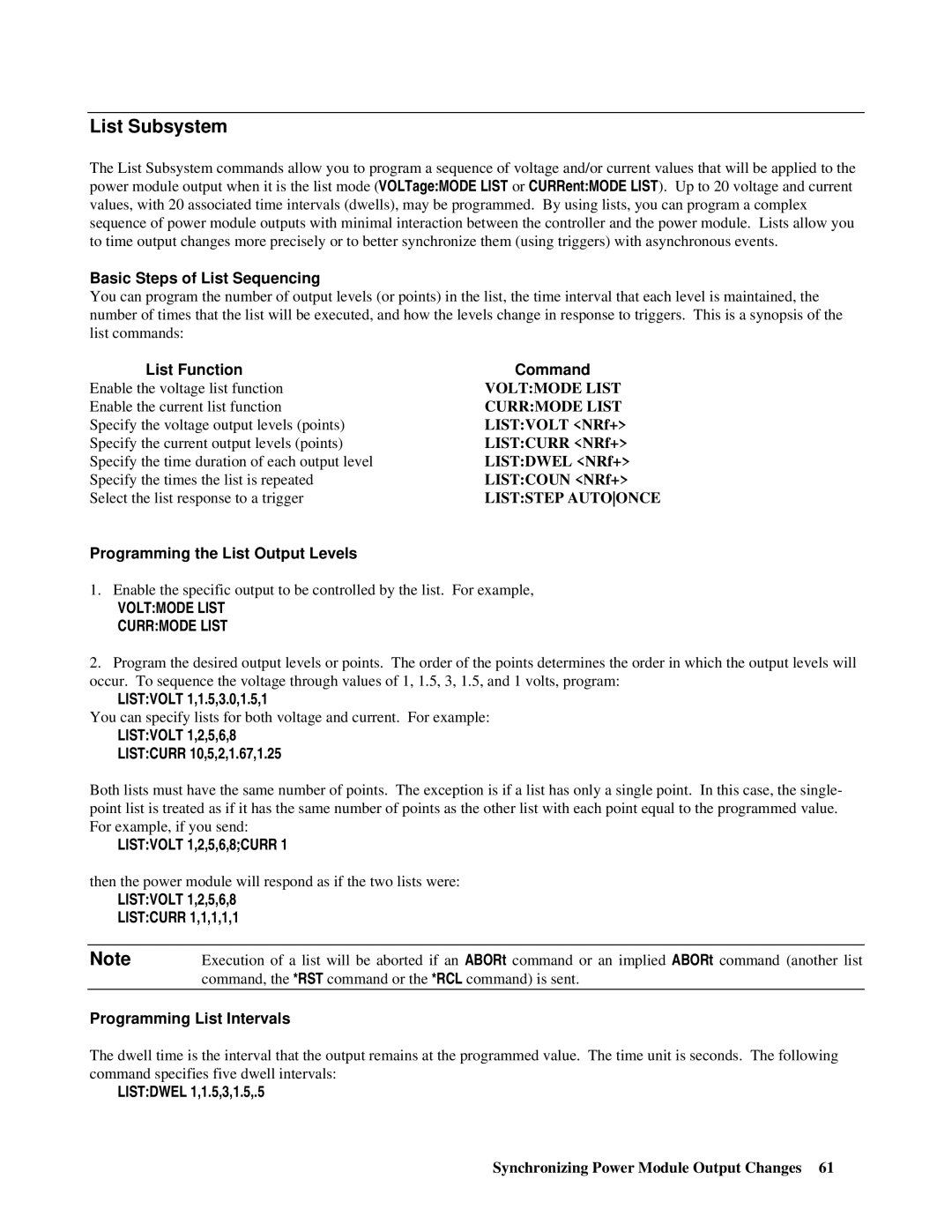
List Subsystem
The List Subsystem commands allow you to program a sequence of voltage and/or current values that will be applied to the power module output when it is the list mode (VOLTage:MODE LIST or CURRent:MODE LIST). Up to 20 voltage and current values, with 20 associated time intervals (dwells), may be programmed. By using lists, you can program a complex sequence of power module outputs with minimal interaction between the controller and the power module. Lists allow you to time output changes more precisely or to better synchronize them (using triggers) with asynchronous events.
Basic Steps of List Sequencing
You can program the number of output levels (or points) in the list, the time interval that each level is maintained, the number of times that the list will be executed, and how the levels change in response to triggers. This is a synopsis of the list commands:
List Function | Command |
Enable the voltage list function | VOLT:MODE LIST |
Enable the current list function | CURR:MODE LIST |
Specify the voltage output levels (points) | LIST:VOLT <NRf+> |
Specify the current output levels (points) | LIST:CURR <NRf+> |
Specify the time duration of each output level | LIST:DWEL <NRf+> |
Specify the times the list is repeated | LIST:COUN <NRf+> |
Select the list response to a trigger | LIST:STEP AUTOONCE |
Programming the List Output Levels
1.Enable the specific output to be controlled by the list. For example,
VOLT:MODE LIST CURR:MODE LIST
2.Program the desired output levels or points. The order of the points determines the order in which the output levels will occur. To sequence the voltage through values of 1, 1.5, 3, 1.5, and 1 volts, program:
LIST:VOLT 1,1.5,3.0,1.5,1
You can specify lists for both voltage and current. For example:
LIST:VOLT 1,2,5,6,8 LIST:CURR 10,5,2,1.67,1.25
Both lists must have the same number of points. The exception is if a list has only a single point. In this case, the single- point list is treated as if it has the same number of points as the other list with each point equal to the programmed value. For example, if you send:
LIST:VOLT 1,2,5,6,8;CURR 1
then the power module will respond as if the two lists were:
LIST:VOLT 1,2,5,6,8
LIST:CURR 1,1,1,1,1
Note | Execution of a list will be aborted if an ABORt command or an implied ABORt command (another list |
| command, the *RST command or the *RCL command) is sent. |
|
|
Programming List Intervals
The dwell time is the interval that the output remains at the programmed value. The time unit is seconds. The following command specifies five dwell intervals:
LIST:DWEL 1,1.5,3,1.5,.5
Synchronizing Power Module Output Changes 61
